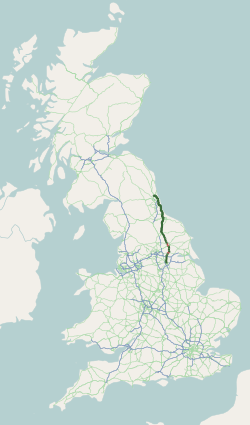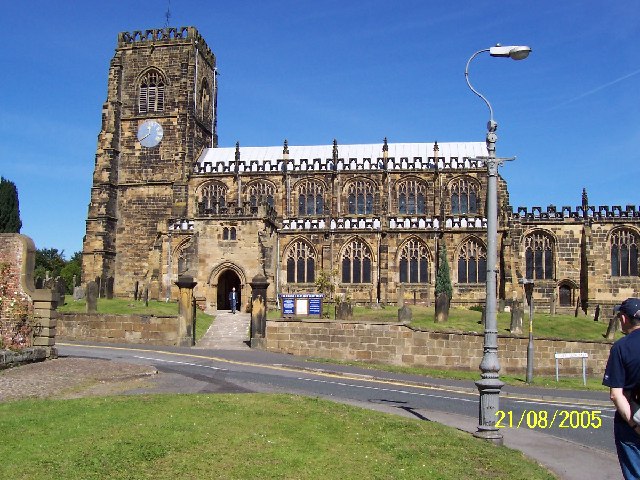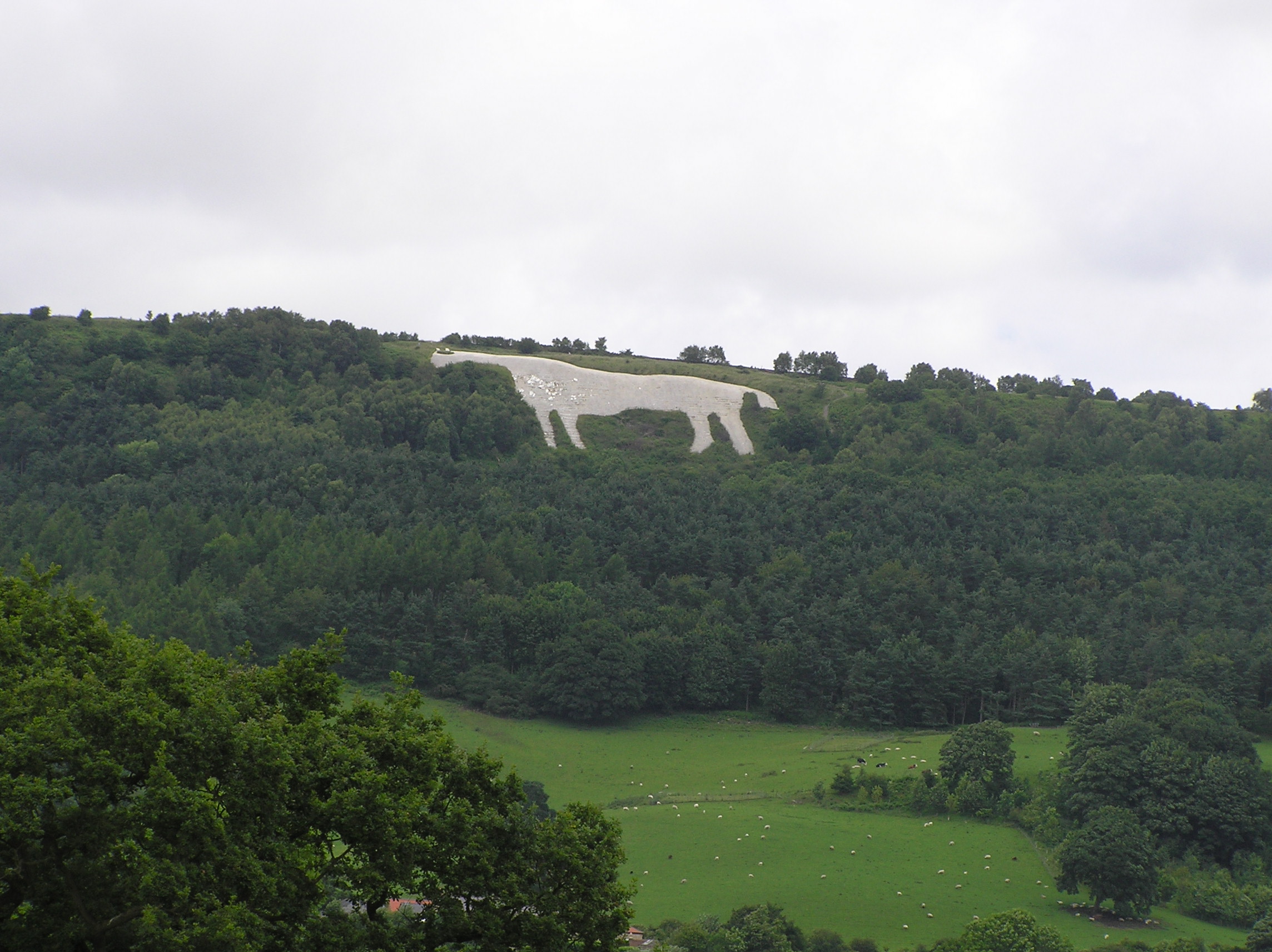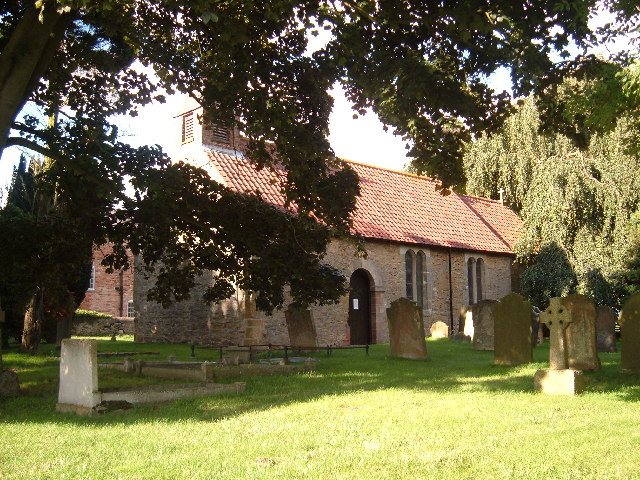|
Hutton Sessay
Hutton Sessay is a village and civil parish in the county of North Yorkshire, England. In 2013 the population of the civil parish was estimated at 100. In recent censuses the population of Hutton Sessay has been included with Sessay parish and not counted separately. The village is situated just west of the A19 between Thirsk and Easingwold. History Though the village is not mentioned specifically in the ''Domesday Book'', it is thought that some of the lands would have been split between the manors of ''Sessay'' and ''Birdforth'' and followed the inheritance of those places thereafter. By the end of the 19th century, the village lands were owned by Viscount Downe. The village used to have both Wesleyan and Primitive Methodist Chapels. Governance The village is within the Thirsk and Malton UK Parliament constituency. From 1974 to 2023 it was part of the district of Hambleton, it is now administered by the unitary North Yorkshire Council. Geography The nearest settlemen ... [...More Info...] [...Related Items...] OR: [Wikipedia] [Google] [Baidu] |
North Yorkshire (district)
North Yorkshire is a non-metropolitan county and Unitary authorities of England, unitary authority area (legally known as the County of North Yorkshire), in the Ceremonial counties of England, ceremonial county of North Yorkshire, England. It covers seven former Non-metropolitan district, districts: Craven District, Craven, Hambleton District, Hambleton, Borough of Harrogate, Harrogate, Borough of Scarborough, Scarborough, Richmondshire, Ryedale and Selby District, Selby. The non-metropolitan county has an area of , and, with the City of York and the boroughs of borough of Middlesbrough, Middlesbrough, Redcar and Cleveland and Borough of Stockton-on-Tees, Stockton-on-Tees (south of the River Tees), forms the ceremonial county of North Yorkshire. It is governed by North Yorkshire Council. History The non-metropolitan county became a unitary authority area on 1 April 2023, following the merger of the above boroughs and districts as part of the 2019–2023 structural changes to l ... [...More Info...] [...Related Items...] OR: [Wikipedia] [Google] [Baidu] |
North Yorkshire
North Yorkshire is a Ceremonial counties of England, ceremonial county in Northern England.The Unitary authorities of England, unitary authority areas of City of York, York and North Yorkshire (district), North Yorkshire are in Yorkshire and the Humber, and Borough of Middlesbrough, Middlesbrough, Redcar and Cleveland, and Stockton-on-Tees Borough Council, Stockton-on-Tees are in North East England. It borders County Durham to the north, the North Sea to the east, the East Riding of Yorkshire to the south-east, South Yorkshire to the south, West Yorkshire to the south-west, and Cumbria and Lancashire to the west. The county is the largest in England by land area, at , and had a population of 1,158,816 in 2021. The largest settlements are Middlesbrough (148,215) in the north-east and the city of York (141,685) in the south. Middlesbrough is part of the Teesside built-up area, which extends into County Durham and had a total population of 376,663 in 2011. The remainder of the cou ... [...More Info...] [...Related Items...] OR: [Wikipedia] [Google] [Baidu] |
Thirsk And Malton (UK Parliament Constituency)
Thirsk and Malton is a constituency in North Yorkshire represented in the House of Commons of the UK Parliament since 2015 by Kevin Hollinrake, a Conservative. Constituency profile As well as the eponymous towns of Thirsk and Malton, the seat also includes Pickering and most of the North York Moors (its southern part), a mixed rugged crags and hillside National Park; its coastline in the seat at Filey is where the Moors meets the sea, with picturesque bays near to Scarborough. Electoral Calculus describes the seat as "Strong Right", characterised by support for socially conservative values and Brexit. History The constituency was first created under the Redistribution of Seats Act 1885 as a county division of the North Riding of Yorkshire. It continued in existence until the 1983 general election, when it was largely replaced by Ryedale following the reorganisation of local government in 1974. Under the Fifth periodic review of Westminster constituencies, coming into effect ... [...More Info...] [...Related Items...] OR: [Wikipedia] [Google] [Baidu] |
Civil Parish
In England, a civil parish is a type of administrative parish used for local government. It is a territorial designation which is the lowest tier of local government. Civil parishes can trace their origin to the ancient system of parishes, which for centuries were the principal unit of secular and religious administration in most of England and Wales. Civil and religious parishes were formally split into two types in the 19th century and are now entirely separate. Civil parishes in their modern form came into being through the Local Government Act 1894 ( 56 & 57 Vict. c. 73), which established elected parish councils to take on the secular functions of the parish vestry. A civil parish can range in size from a sparsely populated rural area with fewer than a hundred inhabitants, to a large town with a population in excess of 100,000. This scope is similar to that of municipalities in continental Europe, such as the communes of France. However, unlike their continental Euro ... [...More Info...] [...Related Items...] OR: [Wikipedia] [Google] [Baidu] |
Sessay
Sessay is a small, linear village and civil parish in North Yorkshire, England. It is situated approximately south-east from Thirsk, and west from the A19 road close to the East Coast Main Line. The civil parish also includes the village of Little Sessay, where the parish church and school are located. In 2013 the population of the civil parish was estimated at 320. In the 2011 census the population of Sessay also included Hutton Sessay and Eldmire with Crakehill parishes and was not counted separately. The 2001 UK Census recorded the population as 311 of which 266 were over sixteen years old. There were 130 dwellings of which 90 were detached. History The village is mentioned in the ''Domesday Book'' as "Sezai" in the wapentake of Gerlestre (from the mid-12th century known as Birdforth). It later became a detached part of the wapentake of Allertonshire. At the time of the Norman invasion, the manor was the possession of the Bishop of Durham and St Cuthbert's Church, Du ... [...More Info...] [...Related Items...] OR: [Wikipedia] [Google] [Baidu] |
A19 Road
The A19 is a major road in England running approximately parallel to and east of the A1 road (Great Britain), A1 road. Although the two roads meet at the northern end of the A19, the two roads originally met at the southern end of the A19 in Doncaster, but the old route of the A1 was changed to the A638 road, A638. From Sunderland northwards, the route was formerly the A108. In the past the route was known as the East of Snaith-York-Thirsk-Stockton-on-Tees-Sunderland Trunk Road. Most traffic joins the A19, heading for Teesside, from the A168 road, A168 at Dishforth Interchange. Route Doncaster–Selby The southern end of the A19 starts at the St Mary's Roundabout with the A630 road, A630 and A638 just to the north of Doncaster itself near to the parish church. It leaves the A638 at the next roundabout as ''Bentley Road'', and then winds its way over the East Coast Main Line, which it follows through Selby and York, through the suburb of Bentley. Much of the course of ... [...More Info...] [...Related Items...] OR: [Wikipedia] [Google] [Baidu] |
Thirsk
Thirsk is a market town and civil parish in North Yorkshire, England; it is known for its racecourse and depiction as local author James Herriot's fictional Darrowby. History Archeological finds indicate there was a settlement in Thirsk around 500–600 BC. The town's name is derived from the Old Norse word ''þresk'' meaning fen or lake. Thirsk is mentioned twice in the 1086 ''Domesday Book'' as ''Tresche'', in the ''Yarlestre'' wapentake, a village with ten households. At the time of the Norman invasion the manor was split between ''Orm'' and ''Thor'', local Anglo-Saxon landowners. Afterwards, it was split between ''Hugh, son of Baldric'' and the Crown. House of Mowbray Most of Thirsk was granted to a Robert from Montbray for whose descendant House of Mowbray and the vale of Mowbray is named. By 1145, what is now Old Thirsk, gained a Market charter giving it town and borough status. The remaining land in the parish was still under manorial rights. The Mowbray ... [...More Info...] [...Related Items...] OR: [Wikipedia] [Google] [Baidu] |
Easingwold
Easingwold is a market town and civil parishes in England, civil parish in North Yorkshire, England. Historically, part of the North Riding of Yorkshire, it had a population of 4,233 at the 2001 census, increasing to 4,627 at the 2011 Census. It is located about north of York, near the foot of the Howardian Hills. History The town is mentioned in the Domesday Book of 1086 as "Eisicewalt" in the Bulford hundred. At the time of the Norman conquest of England, Norman conquest, the manor was owned by Morcar, Earl Morcar, but subsequently passed to the King. In 1265 the manor was passed to Edmund Crouchback by his father, Henry III of England, Henry III. The manor was caught up in the dispute between the 2nd Earl of Lancaster and Edward I of England, Edward I and the manor passed back to the crown following the Battle of Boroughbridge in 1322 which resulted in the execution of the Earl at Pontefract. The manor was restored to the Earl's brother some six years later, but he left no ... [...More Info...] [...Related Items...] OR: [Wikipedia] [Google] [Baidu] |
Domesday Book
Domesday Book ( ; the Middle English spelling of "Doomsday Book") is a manuscript record of the Great Survey of much of England and parts of Wales completed in 1086 at the behest of William the Conqueror. The manuscript was originally known by the Latin name , meaning "Book of Winchester, Hampshire, Winchester", where it was originally kept in the royal treasury. The ''Anglo-Saxon Chronicle'' states that in 1085 the king sent his agents to survey every shire in England, to list his holdings and dues owed to him. Written in Medieval Latin, it was Scribal abbreviation, highly abbreviated and included some vernacular native terms without Latin equivalents. The survey's main purpose was to record the annual value of every piece of landed property to its lord, and the resources in land, labour force, and livestock from which the value derived. The name "Domesday Book" came into use in the 12th century. Richard FitzNeal wrote in the ( 1179) that the book was so called because its de ... [...More Info...] [...Related Items...] OR: [Wikipedia] [Google] [Baidu] |
Hambleton District
Hambleton was a local government district in North Yorkshire, England. The administrative centre was Northallerton, and the district included the outlying towns and villages of Bedale, Thirsk, Great Ayton, Stokesley, and Easingwold. The district was formed by the Local Government Act 1972 on 1 April 1974, as a merger of Northallerton Urban District, Bedale Rural District, Easingwold Rural District, Northallerton Rural District, and parts of Thirsk Rural District, Stokesley Rural District and Croft Rural District, all in the North Riding of Yorkshire. It was subsumed into the new unitary authority of North Yorkshire Council on 1 April 2023. Geography Hambleton covered an area of 1,311.17 km² most of which, 1,254.90 km2, was green space. The district was named after the Hambleton Hills, part of the North York Moors National Park, on the eastern edge of the district. This area was the subject of a national habitat protection scheme as articulated in the United Kingd ... [...More Info...] [...Related Items...] OR: [Wikipedia] [Google] [Baidu] |
North Yorkshire Council
North Yorkshire Council, known between 1974 and 2023 as North Yorkshire County Council, is the local authority for the non-metropolitan county of North Yorkshire, England. Since 2023 the council has been a unitary authority, being a county council which also performs the functions of a district council. The council is based at County Hall, Northallerton, and consists of 90 councillors. It is a member of the York and North Yorkshire Combined Authority. The council has been under no overall control since 2023, having initially been under Conservative Party control following the 2022 North Yorkshire Council election. The council was previously under Conservative control from 1974 to 1993 and from 2003 to 2023. Between 1993 and 2003 it was under no overall control. The leader of the council is Conservative councillor Carl Les, appointed in 2021, and the Chief Executive is Richard Flinton. The council was created in 1974, when local government in England was reformed and the n ... [...More Info...] [...Related Items...] OR: [Wikipedia] [Google] [Baidu] |
Birdforth
Birdforth is a village and civil parish in the county of North Yorkshire, England. According to the 2001 census it had a population of 13. The population remained less than 100 at the 2011 Census. Details are included in the civil parish of Long Marston, North Yorkshire. The village is on the A19 road, about six miles south of Thirsk. History Birdforth was also the name of one of the wapentakes, or subdivisions, of the North Riding of Yorkshire, which covered the area around the village. A school was built in 1875, but closed in 1961. Governance The village lies within the Thirsk and Malton UK Parliament constituency. From 1974 to 2023 it was part of the district of Hambleton, it is now administered by the unitary North Yorkshire Council. Geography The nearest settlements to the village are Hutton Sessay to the north-west; Carlton Husthwaite to the north-east and Thormanby to the south. Birdforth Beck, which flows at the south end of the village, is part of the tribut ... [...More Info...] [...Related Items...] OR: [Wikipedia] [Google] [Baidu] |






